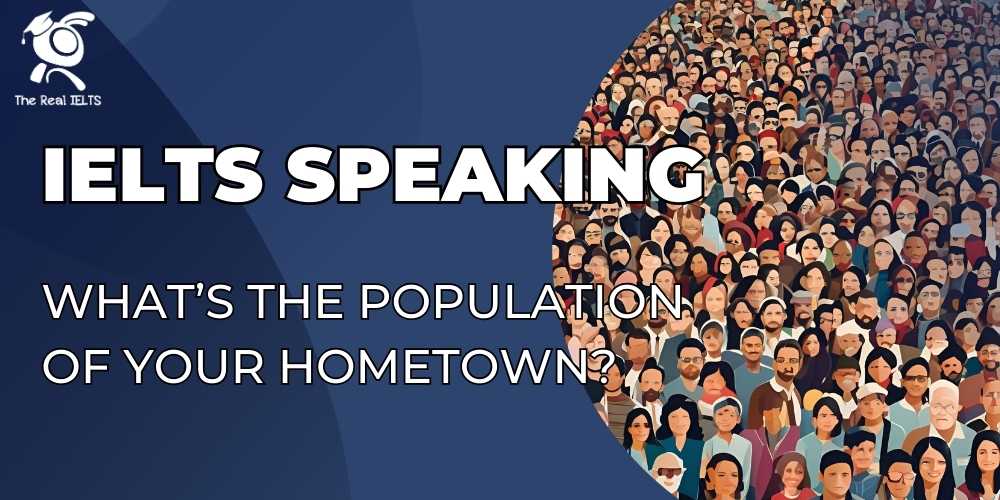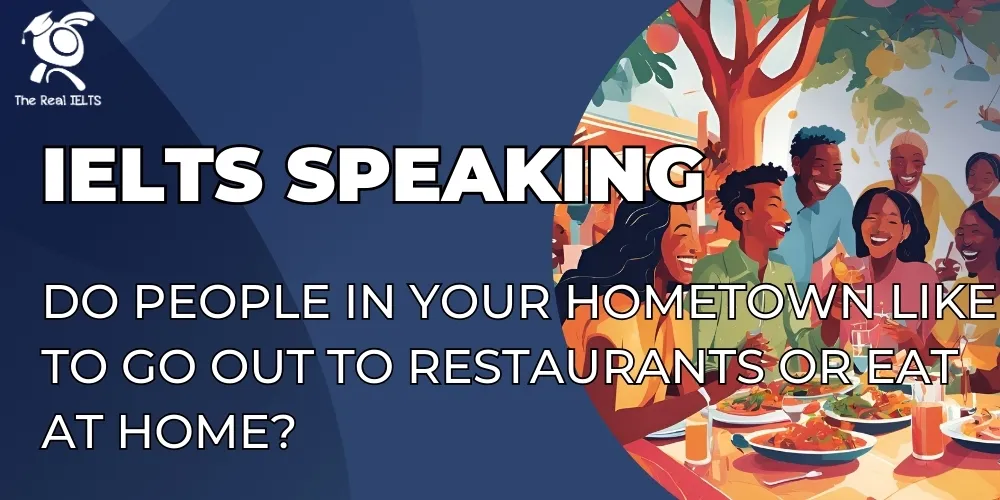Bài viết hướng dẫn cách trả lời về dân số quê hương trong IELTS Speaking. Bạn sẽ biết cách đưa ra con số ước lượng, so sánh, và giải thích ý nghĩa của dân số đối với cuộc sống nơi bạn sống.
Đọc thêm các bài luyện thi IELTS khác.
Đọc thêm câu hỏi khác tại: IELTS Speaking Part 1: Introduction and Interview chủ đề Your hometown.
Đọc thêm IELTS Speaking: Are there any parks or green spaces in your hometown?
Câu trả lời IELTS Speaking: What’s the population of your hometown?
Ví dụ 1
Introduction:
My hometown is Da Nang, a vibrant coastal city located in central Vietnam. It’s a place that holds immense significance to me because it’s where I grew up, surrounded by beautiful landscapes, rich culture, and warm-hearted people. Da Nang is not just a city to me; it’s a part of my identity.
Geographical Description:
Da Nang is blessed with a stunning geographical location. It’s nestled between the East Sea and the Annamite Range, offering a perfect blend of mountains and beaches. The Han River flows through the city, adding to its charm. One of the most distinctive features is the Marble Mountains, a cluster of five limestone and marble hills that are both a natural and spiritual landmark. The city’s coastline stretches for miles, with pristine beaches like My Khe, which is often listed among the most beautiful beaches in the world.
Cultural Aspects:
Da Nang is a melting pot of cultures and traditions. While it’s a modern city, it still retains its cultural roots. One of the most unique festivals here is the Da Nang International Fireworks Festival, held annually along the Han River. It attracts teams from all over the world and lights up the sky with breathtaking displays. The city is also home to various ethnic groups, each contributing to its cultural diversity. Traditional Vietnamese customs, such as Tet (Lunar New Year), are celebrated with great enthusiasm, bringing families and communities together.
Historical Background:
Da Nang has a rich historical background. It was once a major port during the Cham Kingdom and later played a significant role during the French colonial period and the Vietnam War. The city is dotted with historical landmarks, such as the Museum of Cham Sculpture, which houses an impressive collection of artifacts from the Cham civilization. The Dragon Bridge, a modern symbol of the city, also reflects its historical evolution into a thriving urban center.
Economic Activities:
The economy of Da Nang is diverse and dynamic. Tourism is one of the main industries, thanks to its natural beauty and cultural attractions. The city is also a hub for trade and commerce, with a bustling port that connects it to international markets. In recent years, Da Nang has emerged as a center for technology and innovation, attracting startups and IT companies. These economic activities provide livelihoods for many residents and contribute to the city’s rapid development.
Personal Connection:
Da Nang is more than just a place; it’s where my fondest memories were made. I remember spending weekends with my family at My Khe Beach, building sandcastles and enjoying fresh seafood. I also have a deep connection to the Marble Mountains, where I often hiked with friends to watch the sunrise. What makes Da Nang special to me is its perfect balance of modernity and tradition. It’s a city that’s constantly evolving, yet it never loses its soul.
Conclusion:
In summary, Da Nang is a city of natural beauty, cultural richness, and historical significance. Its diverse economy and vibrant community make it a unique place to live and visit. What I love most about my hometown is its ability to make me feel at home, no matter where I am in the world. It’s a place that will always have my heart.
Answer to the Question:
As for the population of Da Nang, it’s currently estimated to be around 1.2 million people. The city has been growing rapidly in recent years, attracting both domestic and international migrants due to its economic opportunities and high quality of life. This growth reflects the dynamic and welcoming nature of my hometown.
Ví dụ 2
Introduction:
My hometown is Hue, a city steeped in history and culture, located in central Vietnam. Known as the former imperial capital, Hue holds a special place in my heart because of its timeless beauty and the sense of tradition that permeates every corner of the city. It’s a place where the past and present coexist harmoniously, and I feel a deep connection to its heritage.
Geographical Description:
Hue is situated along the banks of the Perfume River, which winds its way through the city and adds to its serene atmosphere. The city is surrounded by lush green hills and is not far from the East Sea, giving it a diverse landscape. One of the most iconic features of Hue is the Citadel, a massive fortress that stands as a testament to its imperial past. The nearby Thuan An Beach and Bach Ma National Park also contribute to the city’s natural charm.
Cultural Aspects:
Hue is the cultural heart of Vietnam, known for its traditional music, art, and cuisine. The city is famous for its royal court music, known as Nha Nhac, which has been recognized by UNESCO as an Intangible Cultural Heritage. Hue is also home to numerous festivals, such as the biennial Hue Festival, which showcases traditional and contemporary arts from around the world. The city’s cuisine is another highlight, with dishes like bun bo Hue (spicy beef noodle soup) and banh khoai (crispy pancakes) being must-tries for visitors.
Historical Background:
Hue’s history is deeply intertwined with Vietnam’s imperial era. It served as the capital of the Nguyen Dynasty from 1802 to 1945, and the remnants of this period can still be seen today. The Imperial City, with its grand palaces and temples, is a UNESCO World Heritage Site and a major attraction. The Royal Tombs, scattered along the Perfume River, are another testament to the city’s royal legacy. Hue also played a significant role during the Vietnam War, and sites like the DMZ (Demilitarized Zone) are reminders of this turbulent period.
Economic Activities:
Tourism is the backbone of Hue’s economy, thanks to its historical and cultural attractions. The city also has a thriving handicraft industry, with artisans producing traditional items like conical hats, silk garments, and pottery. Agriculture, particularly rice farming, remains an important activity in the surrounding areas. In recent years, Hue has been working to develop its infrastructure and attract investment, aiming to become a more modern and sustainable city while preserving its heritage.
Personal Connection:
Growing up in Hue, I was always surrounded by its rich history and culture. I have fond memories of visiting the Imperial City with my family, learning about the stories of the emperors and their courts. I also loved taking boat rides along the Perfume River, especially during the autumn when the fragrance of flowers filled the air. What makes Hue special to me is its ability to transport you back in time while still offering the comforts of modern life. It’s a city that has shaped who I am today.
Conclusion:
In summary, Hue is a city of unparalleled cultural and historical significance. Its stunning landscapes, vibrant traditions, and royal heritage make it a unique and captivating place. What I love most about my hometown is its ability to preserve its identity while embracing change. It’s a city that will always feel like home to me.
Answer to the Question:
As for the population of Hue, it’s currently estimated to be around 460,000 people. While it’s not as large as some of Vietnam’s other major cities, its compact size and rich cultural heritage make it a truly special place to live and visit.















